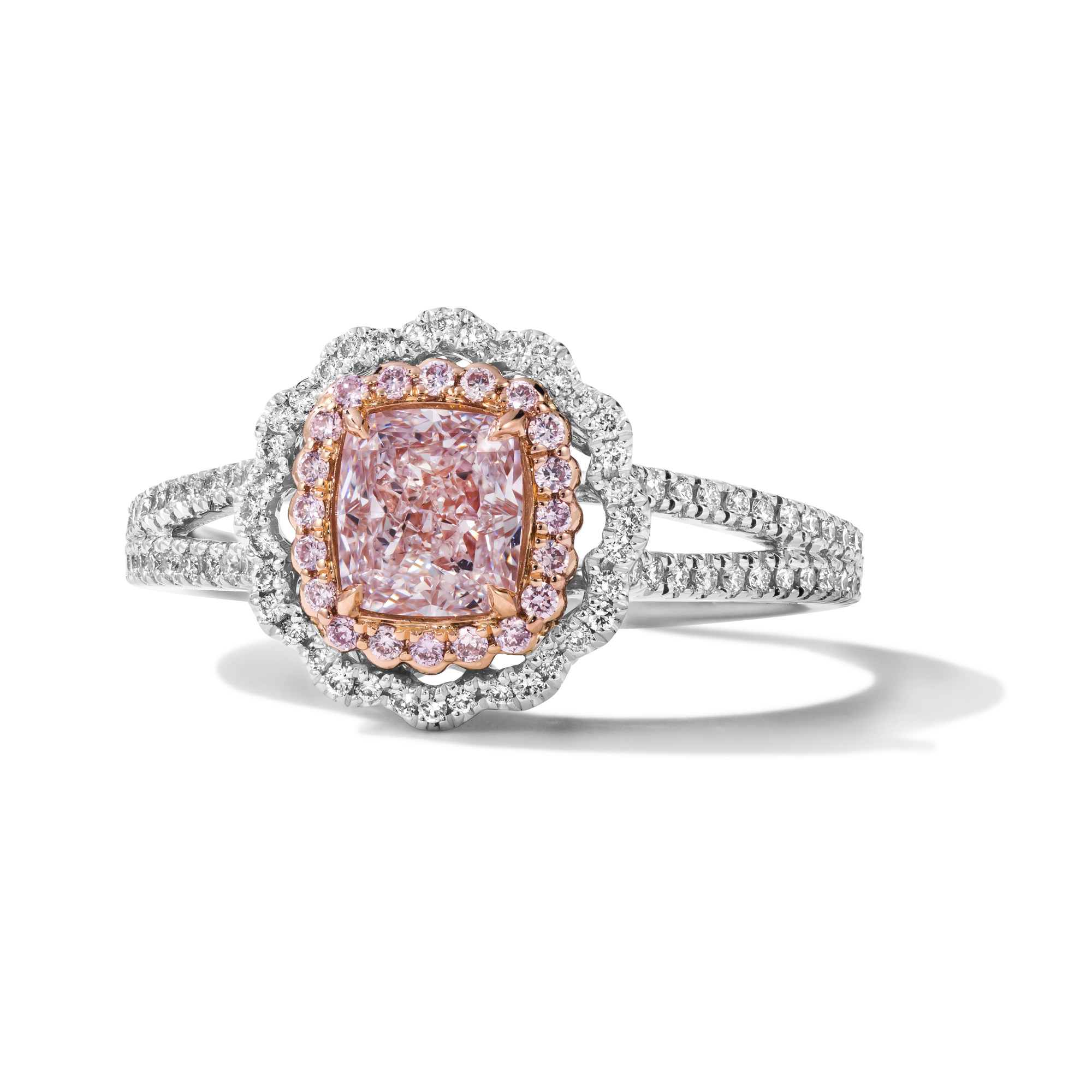Lab-grown diamonds? More sustainable, but less sexy – demand is growing for man-made gems among Gen Z buyers, but old school jewellery dealers say the unique backstory of ‘natural’ stones can’t be beat

Billions of years in the making, buried deep under the Earth’s crust in extreme heat and pressure, diamonds have long been synonymous with rarity and indestructibility. But when you remove that elemental interplay of forces, do diamonds still hold the same appeal?
If the boom in lab-grown diamonds is any sign, there’s a niche group of buyers willing to forgo natural rarity to get practically the same product for a fraction of the price.
Inside King Charles and Queen Consort Camilla’s coronation high jewellery
According to Verified Market Research’s “Global Synthetic Diamond Market” report, that “niche” was valued at US$21.2 billion in 2021 and is projected to reach US$38.9 billion by 2030. Another report, by Research and Markets, suggests the market grew by 50 per cent between 2015 and 2022.

But what exactly are synthetic diamonds, and how close are they to the “real” thing? According to Tobias Kormind, co-founder of 77 Diamonds, Europe’s largest online diamond retailer, to the typical consumer they’re indistinguishable from natural stones. “From a chemical and physical perspective, natural and lab-grown diamonds are identical – only with expert equipment can they be identified,” he said.
Natural diamonds are forged out of carbon pressurised by intense heat and brought up from the Earth’s mantle by volcanic eruptions. Traces of minerals and chemicals in the carbon can affect the colour and clarity of a stone: a blue diamond, for instance, gets its tint from traces of boron.
Ice Cold: A Hip-Hop Jewelry History shows off music icons’ flashiest bling
This process of heating and pressurisation can be massively sped up in a lab setting to create stones of identical hardness and refraction. The first gem-quality diamonds were artificially created in 1971 and the technology has been much refined in the years since.
In 2018, the US Federal Trade Commission (FTC) revised its definition of what can be marketed as a diamond, stating that it “is no longer accurate to define diamonds as ‘natural’ when it is now possible to create products that have essentially the same optical, physical and chemical properties as mined diamonds”.

The International Grown Diamond Association’s definitions concur: “Laboratory conditions for growing diamonds result in the same natural growth process of a single crystal, 100 per cent carbon structure that is created under the earth. The result is a stone that is likewise 100 per cent diamond.”
And this change of definition has been mirrored in consumers’ broadening attitudes.
According to a 2023 Research and Market report, 9.13 million carats of lab-grown diamonds were produced in 2022 and the ability to produce at scale has given rise to a new genre of jewellery centred exclusively around lab-grown gems.
The segment’s growth has prompted the natural diamond industry to react by creating guidelines for labelling lab-grown stones. While they are not the first synthetic gems to hit the market, their identical properties to natural diamonds make them a more serious contender than any of their predecessors.
How to travel like a royal in Hyderabad, India’s historic jewel capital
At the recently opened “Cartier and Women” exhibition at the Hong Kong Palace Museum, a treasure trove of iconic jewellery pieces is on display, from Grace Kelly’s diamond engagement ring, to Wallis Simpson’s famous cabochon sapphire Panthère de Cartier pendant.
Among the pieces with the greatest carat count is a replica of the Toussaint necklace. The original was created for India’s Maharaja of Nawanagar, centred on the 136.25-carat Queen of Holland diamond, but is said to have been broken up for use in other pieces.
The replica was recreated by Cartier from archival sketches, for use in the film Ocean’s Eight. The original featured coloured diamonds but was recreated with cubic zirconias, synthetic stones traditionally used in low-end fashion jewellery, but also by luxury houses as a substitute for natural gems in dummy pieces.
Cubic zirconias were never “authentic” enough to garner the attention of luxury brands. However, lab-grown diamonds’ identical properties to natural stones have prompted diamond producer and luxury jeweller De Beers to establish a lab-grown label, Lightbox.
From a chemical and physical perspective, natural and lab-grown diamonds are identical
Lab-grown, Kormind reckons, appeal to a younger, Gen Z audience who are more attuned to the environmental impact and conflict that all too often goes hand in hand with mining.
It also appeals to their smaller budgets: he points out that a round one-carat G colour VS2 clarity excellent cut diamond with no fluorescence will set buyers back around HK$45,500, while an identical lab-grown diamond costs HK$6,100.
That younger audience may be why lab-grown stones mostly appear in daintier, smaller designs. But despite their accessibility, Brijesh Dholakia, junior CEO of Hari Krishna Exports, an Indian diamond producer, thinks they’re unlikely to be used by traditional luxury houses. “[The high jewellery] segments typically use larger, higher-quality diamonds that are not yet widely available in lab-grown form,” he said.
Will The Eternal Pink diamond set a new auction sales record?
Dholakia believes these clients with high spending power, and those who purchase for sentimental and ceremonial reasons, will always prefer natural stones.
“Consumers who are looking to purchase engagement rings or other high-end jewellery items may place a higher value on the rarity and exclusivity of natural diamonds and may be less likely to consider lab-grown,” he added.
Unique natural stones appeal more to brides, dominating the market for diamond engagement rings that was worth US$28.6 billion in the US and Canada alone in 2019, and is expected to reach US$39.7 billion by 2027, according to De Beers’ “Diamond Insight Report 2019”. And as demand increases, costs will only fall. “[Lab-grown diamond] prices [will] continue to decline,” added Kormind. “They will at some point cease to be precious and may no longer be suitable for bridal.”

Eddie LeVian, CEO of American jewellers Le Vian, whose ancestors guarded the famous Koh-i-noor diamond in 18th century Persia, believes lab-grown gems will never replace natural gems.
“As late as 200 years ago, diamonds and gems were only the purview of royalty. They symbolised the authority and status of royalty,” he said.
Shine bright like a diamond: Rihanna’s 10 best high jewellery moments
“In the 21st century, with the rising wealth of the great Asian countries – especially China and India – the demand for fine natural diamonds and gems has by far surpassed the finite availability of these rare luxuries.”
Dholakia added: “There will always be consumers who value the rarity and exclusivity of natural diamonds and are willing to pay a premium for them.”

While the synthetic diamond industry has grown, so has the demand for natural stones. De Beers’ “Diamond Insight Report 2022” showed global demand for natural diamond jewellery was 10 per cent higher in 2022 than pre-pandemic in 2019.
In fact, the mass production of lab-grown gems may elevate natural gems further.
Is gold getting old? How high jewellers fell for cheaper, colourful metals
LeVian reveals that the wholesale price of a two-carat lab-grown diamond is below HK$2,500 – just one per cent of that of its natural counterpart. For this reason his brand, which counts Rihanna, Jennifer Lopez and Taylor Swift among its clients, insists he will never work with lab-grown diamonds – despite the high-profit margins
“The world has no choice but to offer the masses who want but cannot have these symbols of status and luxury, a palatable alternative with the same chemical composition and that they could afford,” he added.

- De Beers have launched a lab-grown label, Lightbox, and 77 Diamonds also works with artificial stones – but A-list luxury jeweller Eddie LeVian says he will never go near them
- The ‘Cartier and Women’ exhibition at the Hong Kong Palace Museum includes Grace Kelly’s engagement ring, Wallis Simpson’s Panthère de Cartier pendant and a replica of the Toussaint necklace, made for Ocean’s 8